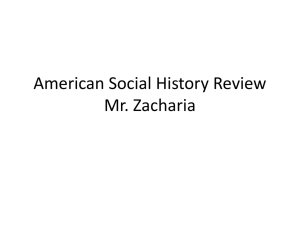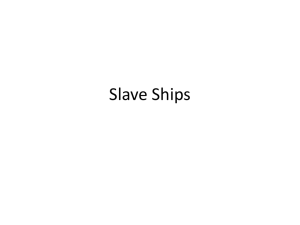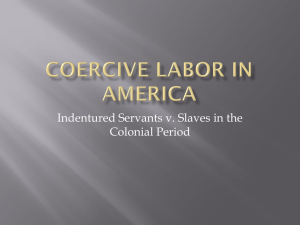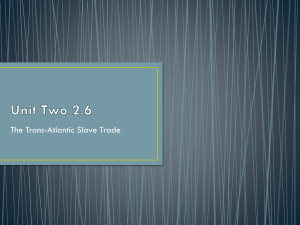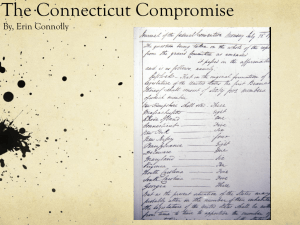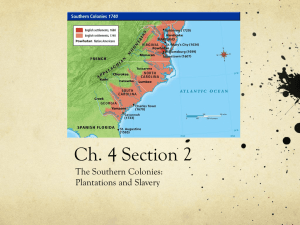Ch 3.2 The Southern Colonies
advertisement
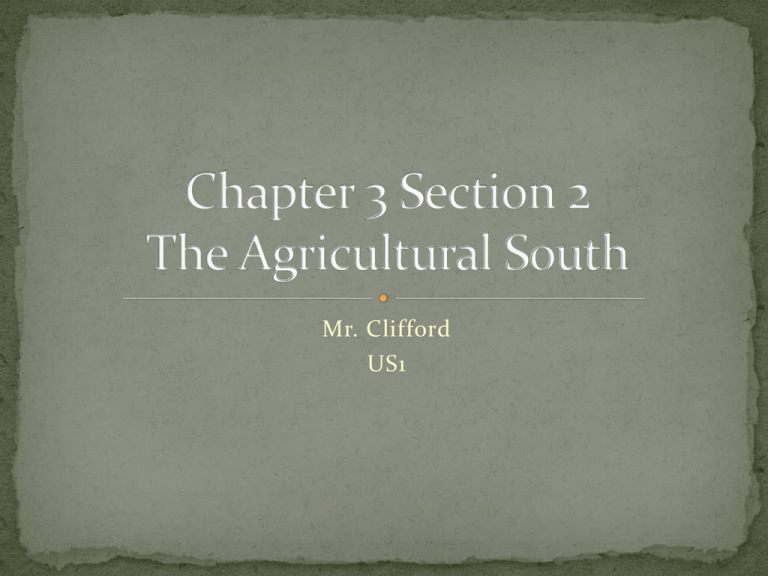
Mr. Clifford US1 - In the Southern colonies, a predominantly agricultural society developed. WHY IT MATTERS - The modern South maintains many of its agricultural traditions. Cash Crop Slave Triangular trade Middle passage Stono Rebellion A Diverse & Prosperous People: Thousands of German raised grain, livestock, and tobacco. Scottish & Scot-Irish settled along the hills of North Carolina. Poor, small farmers formed the majority of the Southern population. Planters: owners of large profitable plantations, -controlled much of the South’s economy; - controlled the South’s political & social institutions. Plantations developed instead of towns/cities. Plantations: Were built near rivers Planters could ship their goods directly to the northern colonies & Europe Maryland, Virginia, & North Carolina: grew broad green leaves of tobacco. South Carolina & Georgia: harvested rice, cotton, & indigo Women in colonial society were 2nd class citizens. Upper class women escaped were not treated as equals. Barely any legal, civil, or economic rights Could not vote, preach, or own property Women were responsible for all domestic activities including: (cooking, milking cows, slaughtering pigs, & tended the garden, sewing clothing, washed & cleaned clothes) Mostly made up of white men who traded a life of prison or poverty in Europe for limited servitude in North America. Indentured servitude was 5-7 years of harsh labor Indentured servants had no money or no place to go. Indentured Servants either: moved to the western outskirts of southern colonies to start a farm asked their former employer for work. The Evolution of Slavery: indentured servant population fell, colonists turned to African slaves as an attractive alternative. Economics: African slaves worked for life and thus brought a much larger return for the investment. Social: colonists saw the African’s dark skin as a sign of inferiority since most colonists only saw Africans as slaves. - 17th Century: Africans became part of a transatlantic trading network known as ‘triangular trade’. PROCESS 1.) Merchants carried rum & other goods/merchandise from New England to Africa. 2.) In Africa, merchandise was exchanged for slaves. 3.) Slaves were sent to West Indies & sold for sugar & molasses. 4.) Sugar & molasses was then shipped to New England to be distilled into rum. The Triangular Trade encompassed a network of trade routes criss-crossing the Northern & Southern Colonies, West Indies, England, Europe, & West Africa. The network carried an array of goods including furs, fruit, tar, tobacco, etc. Journey from Africa to slave auction in America Africans where whipped, beating, and fell ill to disease that swept could sweep through entire vessel. Sick slaves were routinely thrown overboard to avoid the spread of disease Smell of blood, sweat, human waste, & excrement permeated throughout the ship. Many slaves chose suicide rather than suffer through the Middle Passage. 20% of all slaves who were on ship died on route to America. Amistad 80% - 90%of all slaves worked in the field Full time labor began at age 12 and continued till death. 10% - 20% of slaves worked in the house of the owner or as artisans. Domestic slaves: cooked cleaned, raised the master’s children treated with equal cruelty Other slaves developed skills as artisans (carpenters, bricklayers, blacksmiths) and were rented out to work on other plantations. Culture & Family: life was based on their cultural heritage wove baskets and molded pottery just like in their homeland Music, dance, & story telling helped slaves keep their traditions. Dancing paid tribute to ancestors and gods. The dancing would endure throughout the slave era. Families were separated because of slave trade. Slaves would take care of family or other slaves who lost family members. - Stono Rebellion: September 1739 – 20 slaves gathered at Stono River south of Charleston. With guns & other weapons slaves killed several planter families and tried to get other slaves to flee south to Spanish Florida. white militia killed or captured all the slaves. Captured slaves were executed. The Stono Rebellion made planters frightened and led to stricter slave laws and tighter restrictions. From 1760-1801 in Virginia, 1,680 enslaved men, women, and children fled their plantation Many runaway slaves found refuge with Native Americans South depended more on slavery while the industrial North did not. Made In America
